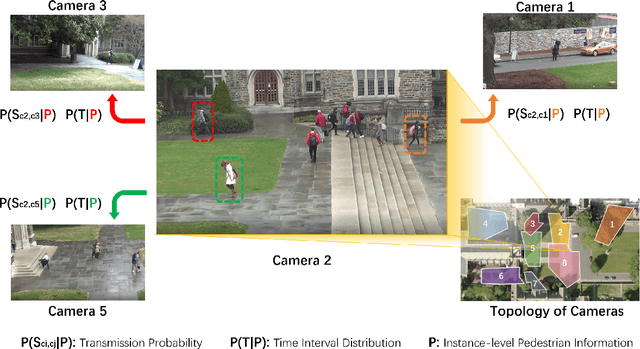Learning Instance-level Spatial-Temporal Patterns for Person Re-identification
Paper and Code
Jul 31, 2021



Person re-identification (Re-ID) aims to match pedestrians under dis-joint cameras. Most Re-ID methods formulate it as visual representation learning and image search, and its accuracy is consequently affected greatly by the search space. Spatial-temporal information has been proven to be efficient to filter irrelevant negative samples and significantly improve Re-ID accuracy. However, existing spatial-temporal person Re-ID methods are still rough and do not exploit spatial-temporal information sufficiently. In this paper, we propose a novel Instance-level and Spatial-Temporal Disentangled Re-ID method (InSTD), to improve Re-ID accuracy. In our proposed framework, personalized information such as moving direction is explicitly considered to further narrow down the search space. Besides, the spatial-temporal transferring probability is disentangled from joint distribution to marginal distribution, so that outliers can also be well modeled. Abundant experimental analyses are presented, which demonstrates the superiority and provides more insights into our method. The proposed method achieves mAP of 90.8% on Market-1501 and 89.1% on DukeMTMC-reID, improving from the baseline 82.2% and 72.7%, respectively. Besides, in order to provide a better benchmark for person re-identification, we release a cleaned data list of DukeMTMC-reID with this paper: https://github.com/RenMin1991/cleaned-DukeMTMC-reID/
 Add to Chrome
Add to Chrome Add to Firefox
Add to Firefox Add to Edge
Add to Edge